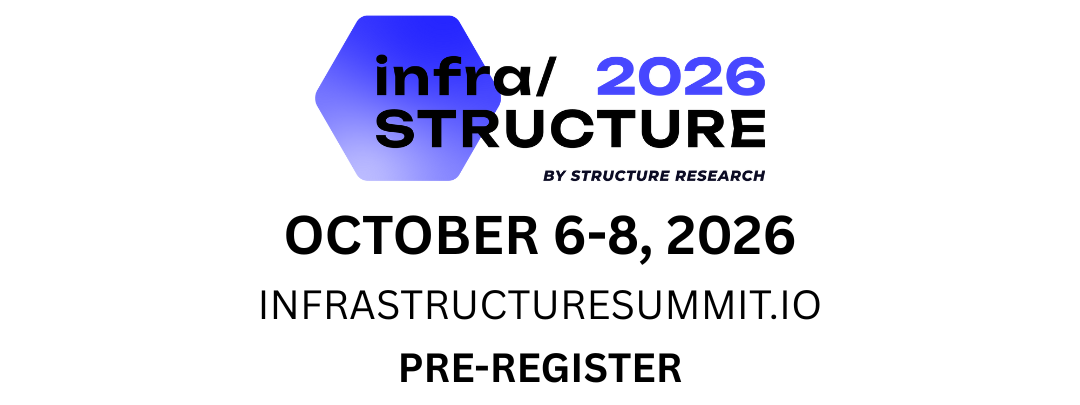WSS: Another hyperscaler pulling back sparks yet more discussion about sector demand; conversation shifting from fake to ghost data centres
The week saw yet more pullback activity from hyperscalers. This time reports indicate AWS is the latest hyperscaler to take a bit of a step back on infrastructure commitments in similar fashion to how Microsoft has done in the last several months. The questions continue to be asked: is this a cause for concern and a warning sign that the sector has overbuilt its infrastructure capacity? While we have to recognize and appreciate that three hyperscalers have pulled back seemingly in succession, and this does not seem to be coincidental, there is still no change in our baseline view that these developments are more the byproduct of the normal ebbs and flows of hyperscale absorption and building of expansion capacity. The numbers are definitely bigger and can spook investors, but a paring down of a gigawatt here and a gigawatt here – not to dismiss the significance – is still not going to move the needle significantly. The sector remains on solid footing and what we are more or less seeing here is long-term infrastructure planning optimization and some conservatism brought on by instability and uncertainty in the global economy, US trade policy and geopolitics. AWS CEO Andy Jassy penned his letter to shareholders recently and all indications are that it is full steam ahead and heavy investments are going to be made in AI and cloud infrastructure. And we will have details, but AWS has already confirmed that is exactly the case: this is ‘routine capacity management’.
The hyperscale pullbacks should make it even unlikelier that spec builds are out there and our contributor Dan Golding discusses why that is the case and posits the idea of a ghost data centre, which is basically an asset that gets stood up and accumulates value as an asset that is increasingly likely to get leased up given the demand profile of the sector and the pathway to live capacity by simply being in existence (ie. not fake) and a solid proof-of-concept. The Applied Digital data centre in North Dakota is an example of a solid asset that is moving in this direction, getting built without a pre-lease but having visibility and a clear path to being taken up by a major customer (we also take a look at the latest earnings report from publicly listed Applied Digital). These assets are starting to pop up from the cryptocurrency space and leasing has happened. CoreWeave, for example, has taken infrastructure that was formerly positioned for bitcoin mining from the likes of Core Scientific and now Galaxy Digital. Galaxy just leased 133MW of critical IT to CoreWeave, with the potential for more. The long and short of it: there is a big difference between fake data centres and a dream, and ghost data centres, which present a more viable path to operational status and customers.
The hyperscale pullbacks have been at the forefront of the sector’s chatter, but there is plenty of word on the street the other major hyperscalers like Oracle, Meta and Google, are busy procuring capacity and leasing colocation, while two other hyperscale names are also starting to get attention. In the US, NVIDIA is said to be active in data centre procurement and this comes as it confirms building supercomputer fabrication plants in the domestic US. Could this be the starting point for data centre development and ultimately a NVIDIA cloud? We think it is sooner than later and more realistic than people probably think. Another name to follow is ByteDance. Both the social media and cloud infrastructure (BytePlus) sides are expanding and taking down capacity in global markets. The overall activity belies the argument that there is an unhealthy imbalance between supply and demand brewing.
AI demand remains a moving target and that is driving the data centre infrastructure conversation and why the hyperscale pullbacks have caused so much stress and consternation. The DeepSeek revelations were a definite turning point that brought to light the idea of Jevon’s Pardox, which is starting to play out in real time. We look at the case of Thomson Reuters, which has used open source and alternative AI models to moderate AI consumption, but funnel the savings into precisely more AI consumption for other workloads. Bringing the cost of AI down is going to help push broader uptake and will drive overall infrastructure consumption.
Finally, the past week saw a number of hires from the likes of Rackspace, nLighten, Green Mountain, CyrusOne, DC BLOX, Pulsant and Aligned Data Centers, with a number of these roles having very targeted remits. Speaking of targeted roles, we also comment on how operators should be looking to hire network experts that can understand the unique requirements of hyperscale networks. Finally, there was more strategic activity, with TierPoint, Raxio and evroc securing financing and growth capital, while CleanArc Data Centers brought in new investors and NorthC acquired a portfolio of data centres from Colt.
or



